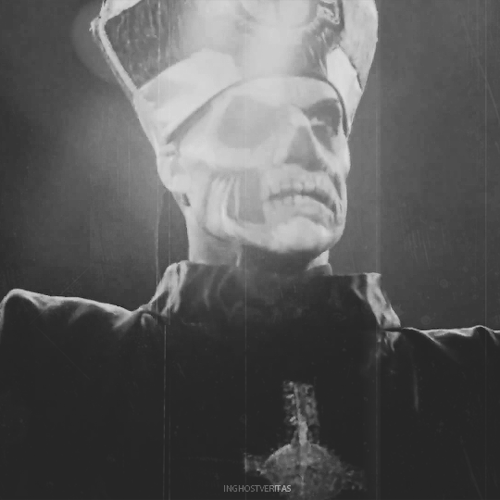Post by Cee * on Sept 27, 2016 15:02:46 GMT
The Inquisition
(pictured above, the inquisitor's cross)
(pictured above, the inquisitor's cross)
I: Brief History
Formerly known as Nox Invictus, is the rite enforcement element found within the walls and surrounding area of Old Chicago. While once used as a term of degradation to the order before the walls went up, it was adopted as a means to strike fear into those who are old enough to remember the former order, as well as remind younger vampires that, despite their immortality and power, there are those that they must answer to. Formerly, their order was one of clandestine action. They operated in the shadows, maintaining the veil of secrecy and eliminating all who sought to expose their kind to the world. This, at times, brought the order and her agents to blows with those that they were sworn to protect.
During these times, events happened that were known as Cullings. The individual or mass destruction of vampires in order to protect the veil. Entire covens and bloodlines were, at times, wiped out in order to protect the veil. During these times, agents of this order - referred to as daggers - were often viewed upon with a great amount of disdain by their fellow vampires. Thus they often operated in secret, their contact with individuals limited to other members of the order to avoid conflict. Time immemorial they answered to a council of seven of elders that were elected to their seats every hundred years from the eldest of covens that remained in existence. However, there was often very little change in who took up these seats.
With each seat, there was designated shield that went along with it. The highest members of the order, they were overseers of a defined region of land. The daggers reported to the shields who spoke directly with the council to do their bidding. When there was a breach of rites or the break in the veil, it was customary that the designated shield of the region would descend upon the location to deal with such dissent. Only a shield could approve of a culling, and only the council, if appealed to, had the power to override such a judgement.
During these times, events happened that were known as Cullings. The individual or mass destruction of vampires in order to protect the veil. Entire covens and bloodlines were, at times, wiped out in order to protect the veil. During these times, agents of this order - referred to as daggers - were often viewed upon with a great amount of disdain by their fellow vampires. Thus they often operated in secret, their contact with individuals limited to other members of the order to avoid conflict. Time immemorial they answered to a council of seven of elders that were elected to their seats every hundred years from the eldest of covens that remained in existence. However, there was often very little change in who took up these seats.
With each seat, there was designated shield that went along with it. The highest members of the order, they were overseers of a defined region of land. The daggers reported to the shields who spoke directly with the council to do their bidding. When there was a breach of rites or the break in the veil, it was customary that the designated shield of the region would descend upon the location to deal with such dissent. Only a shield could approve of a culling, and only the council, if appealed to, had the power to override such a judgement.
In Old Chicago, general members of this order, known as Inquisitors, answer directly to a board of three Grand Inquisitors who are elected to their positions by the King. They act as enforcers of the rites and customs that hold the city together, policing both humans and vampires alike. Much like the days of old, each Grand Inquisitor has an assigned section of the city in which they oversee ( the inner city, the outer city, the ruins.) While Grand Inquisitors maintain their power within any section the enter, operations held within areas outside of their jurisdiction must be done with the blessing of the Grand Inquisitor of that designated area. The same rules apply to general Inquisitors who leave their designated section, as they must seek sanctioning from the designated Inquisitors of that sector.
To a degree, Inquisitors answer as much to the Grand Council (and therefor to the King,) as much as they do the lords and ladies of Old Chicago. However in disputes and apostasy that involve the noble houses or covens, the word of a Grand Inquisitor supersedes that of a noble's. In all matters, when challenged, The King has the final say in any matter, but may choose to take advisement from the Grand Inquisitor of the sector if necessary.
To a degree, Inquisitors answer as much to the Grand Council (and therefor to the King,) as much as they do the lords and ladies of Old Chicago. However in disputes and apostasy that involve the noble houses or covens, the word of a Grand Inquisitor supersedes that of a noble's. In all matters, when challenged, The King has the final say in any matter, but may choose to take advisement from the Grand Inquisitor of the sector if necessary.
The Grand Council of Old Chicago 1
Grand Inquisitor outer city
Grand Inquisitor ruins
[/ul][/font][/quote] Inquisitors of Old Chicago 2
Inquisitors outer city
Inquisitors ruins
IV: Notes
1 Grand Inquisitors answer directly to the King.
2. Inquisitors answer to the lords and ladies of Old Chicago, but their authority does not supercede that of the King's, nor the Grand Inquisitors.
2. Inquisitors answer to the lords and ladies of Old Chicago, but their authority does not supercede that of the King's, nor the Grand Inquisitors.
[/ul][/div]
